It is always tricky to get children to understand that living things can get eaten by other living things. We have tried very hard to make sure my children know that a chicken in a packet was once a live chicken and that they are food for us.
So with that in mind, we decided to look at food chains.
We got out all of the children’s plastic animals and a few soft toy animals (ones that were missing) to help. We also picked some leaves from the garden, and I made some red arrows on the computer and printed them out.
Firstly we names all the animals to check he knew what they were.
We then group the animals into
1. Meat eaters (Carnivores)
2. Vegetable Eaters (Herbivores)
3. Both (Omnivores)
Then we decided if we could make some chains with arrows to show what was eaten by which animal. The arrow in a food chain means ‘Food for’.
I explain that all food chains usually start with a ‘producer’ or, as I explained to Noah, a vegetable or something green as it makes its own food from the sun.
Then anything that eats something else is called a consumer.
These are some of the chains we made!
This is such a simple exercise for little ones, but if you want to stretch older children t that bit further, then I have made the worksheet below. It contains cards to cut out and arrows so you can make your own food chains and a vocabulary sheet. I have included the answers for the chains on the fourth sheet.
Have fun with your food chain exploration!
Find out more about food chains and food webs.
Last Updated on March 14, 2023 by Emma Vanstone

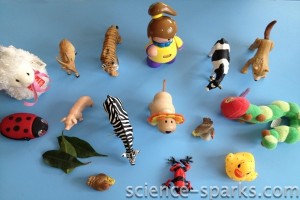
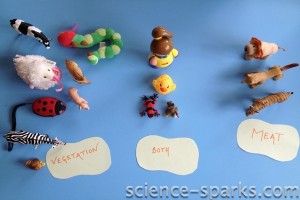
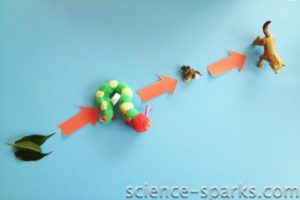
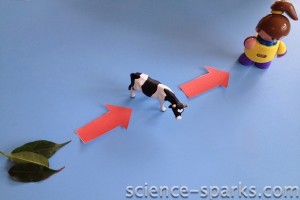
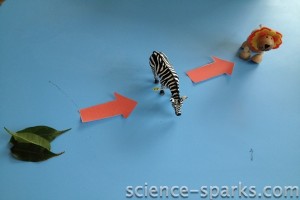
We also talk a lot about the meat we eat and try to explain that it came from living animals. My son was quite distressed when he learned this and kept telling me that chooks (chickens) are his friends and wasn’t too happy eating them at first.
I can understand that – it takes a while to get their head around it, but I think it is important they understand the nature behind it, and then they can make their own decisions. If mine decided they wanted to be veggie then that would not worry me as long as they respect the natural food chain process.
This is such a great idea! 🙂
Thank you kindly!
This is outstanding and clever lesson. I really makes the life cycle come ‘alive’.
What a compliment! Thank you. I enjoyed putting this one together and Noah enjoyed having a go!
Very cool idea!
Oooh I love this! What a great post! I think it is very important to explain things like (where our food comes from…) this to kids! Even if it is sad to think of how we all “each other”!
Thanks for sharing on Kids Get Crafty!
Maggy & Alissa
We certainly have a lot of toy animals, and I love this way of using them to learn about the food chain. My daughter is fascinated by learning about what other animals eat especially meat eaters so this would be right up her alley.
This is such a great learning activity and a great way to use the animal toys. Thanks for sharing at Sharing Saturday 🙂
Great idea .thanks for sharing.